

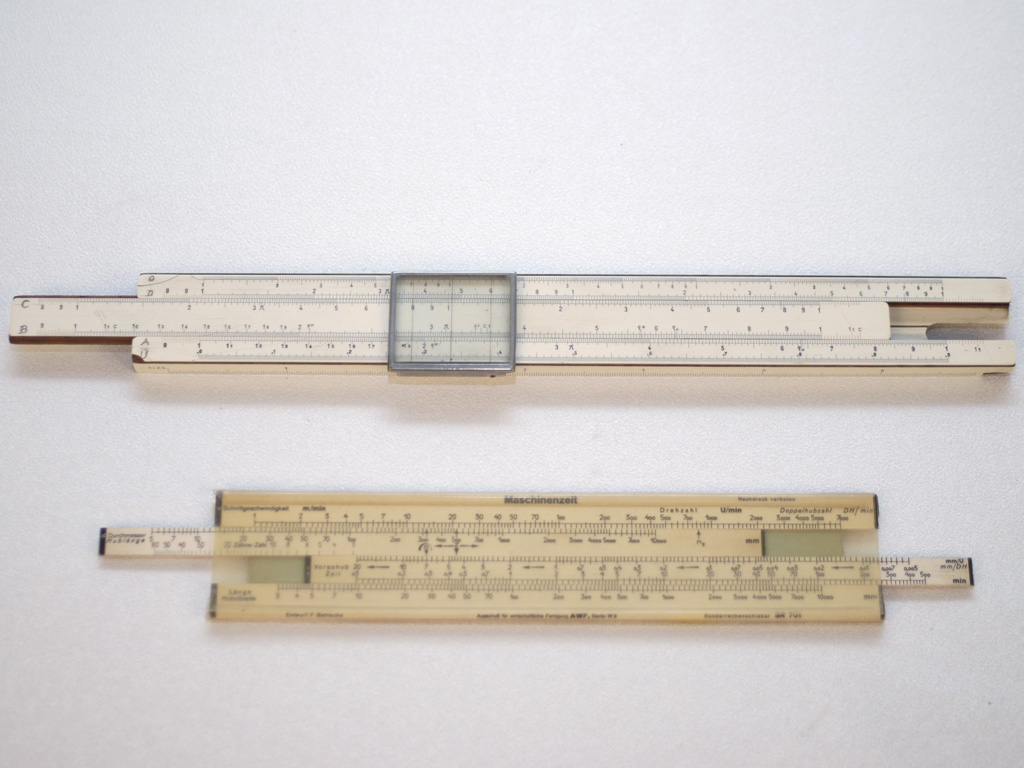
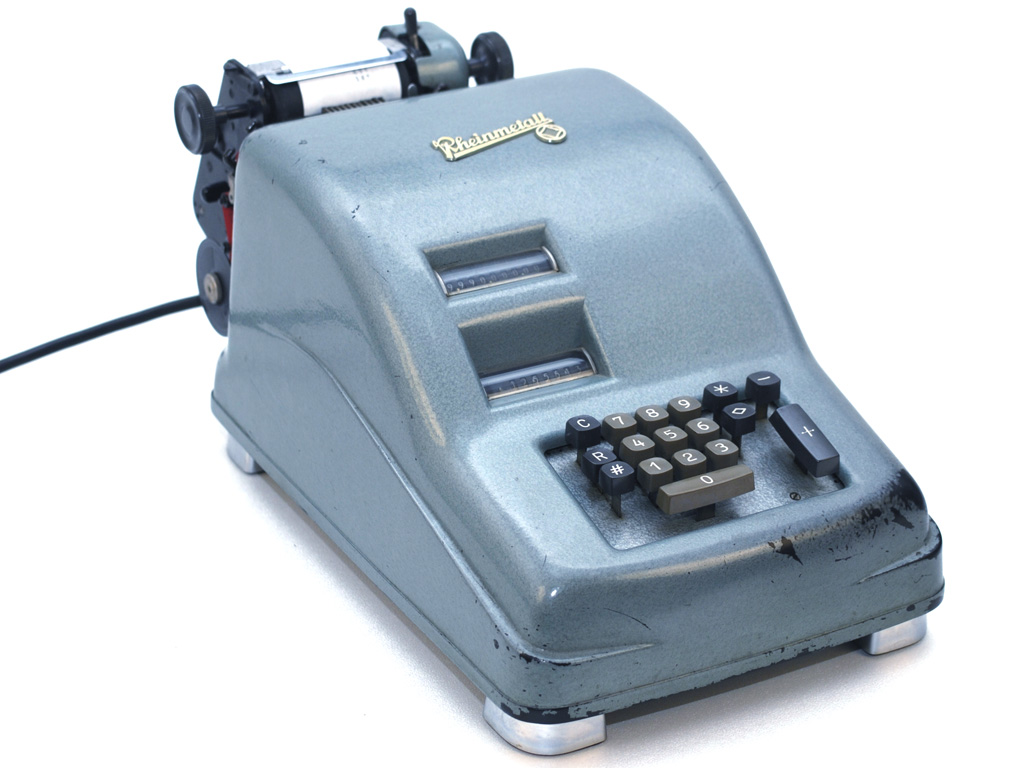
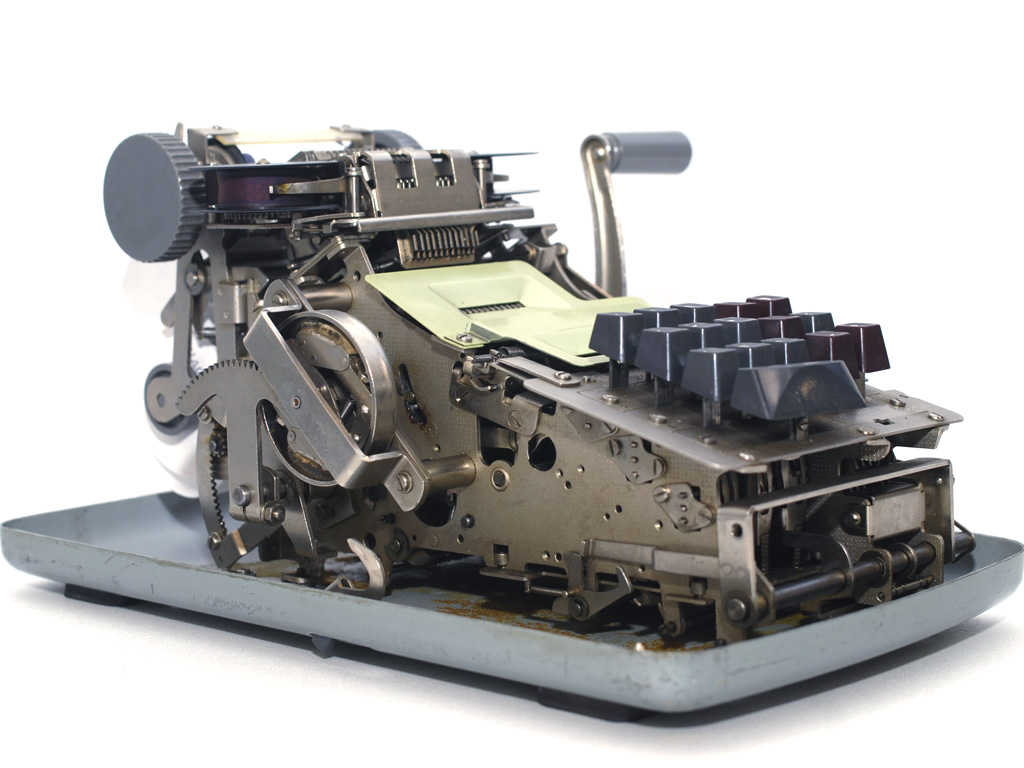


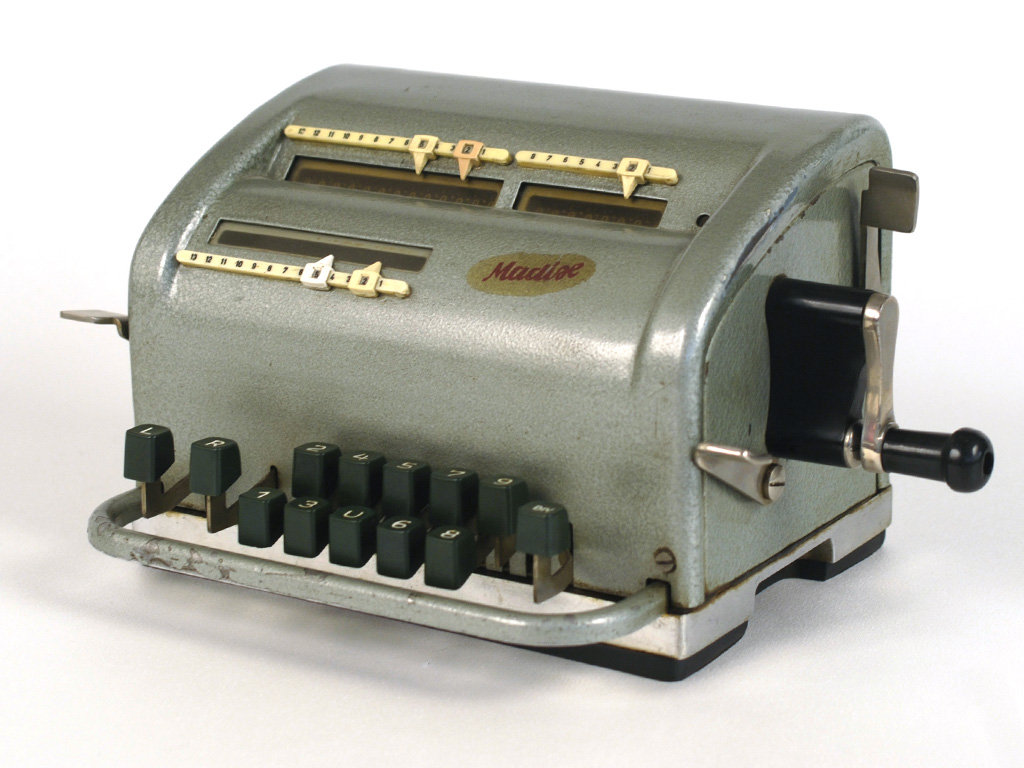
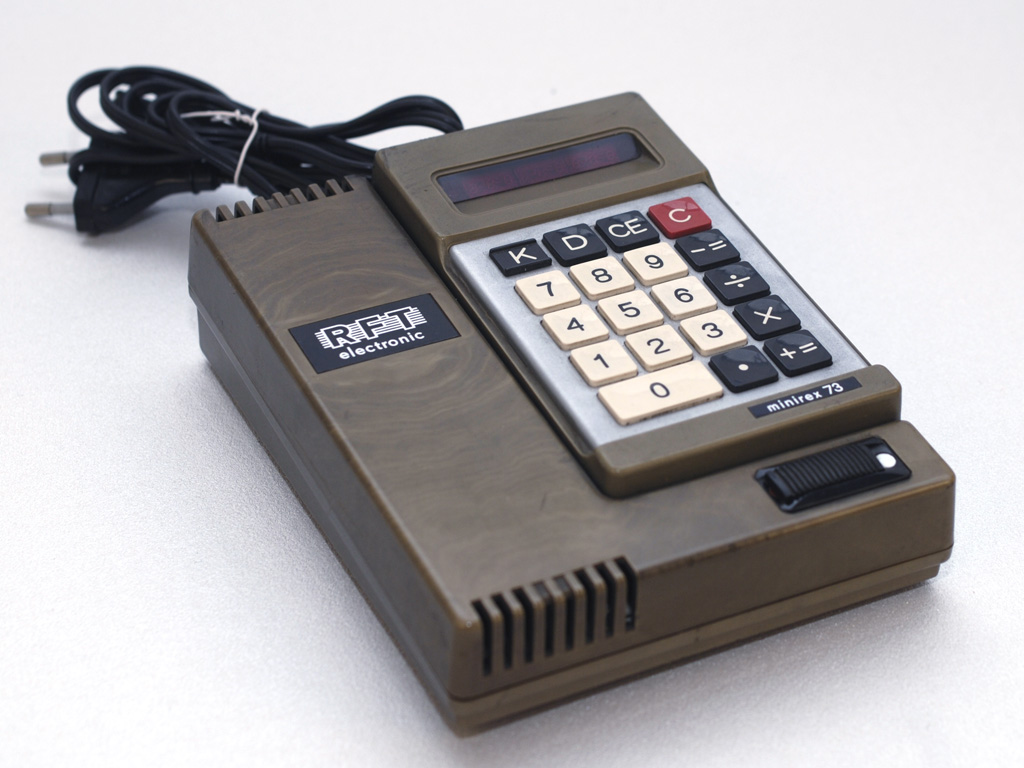


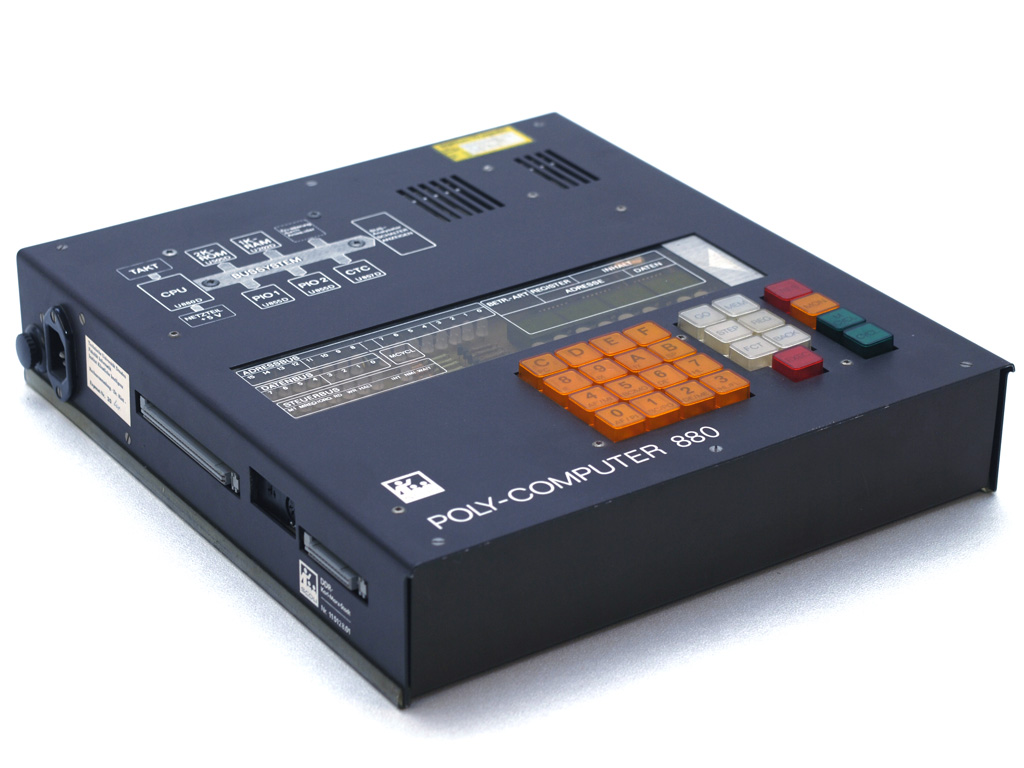
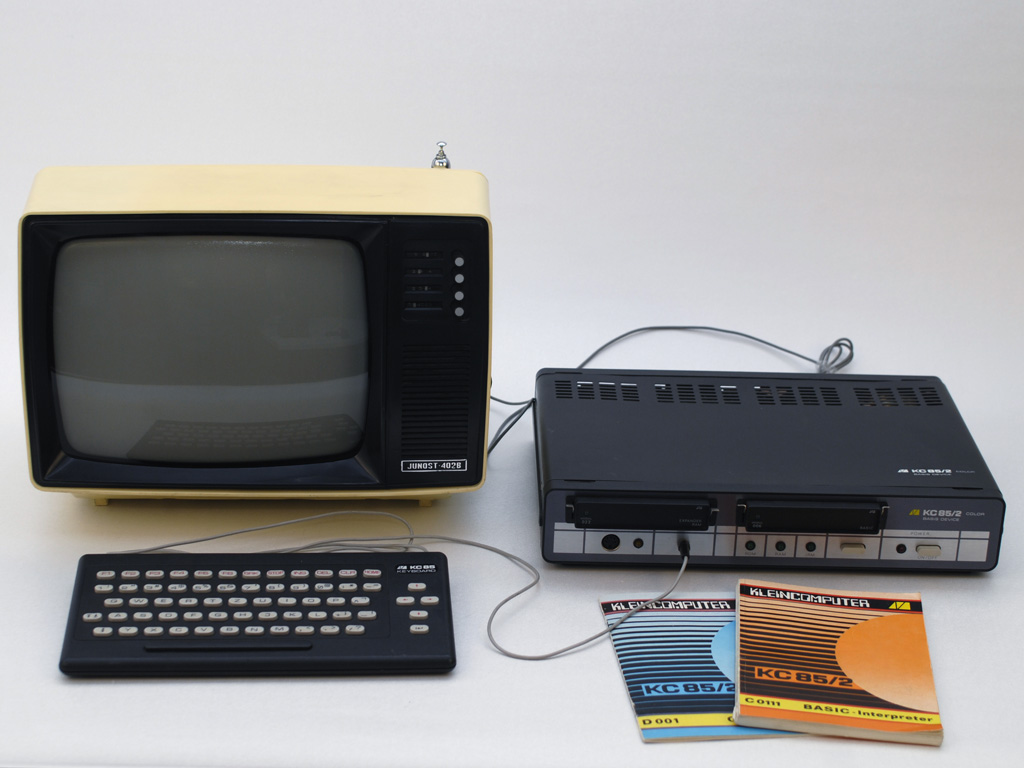
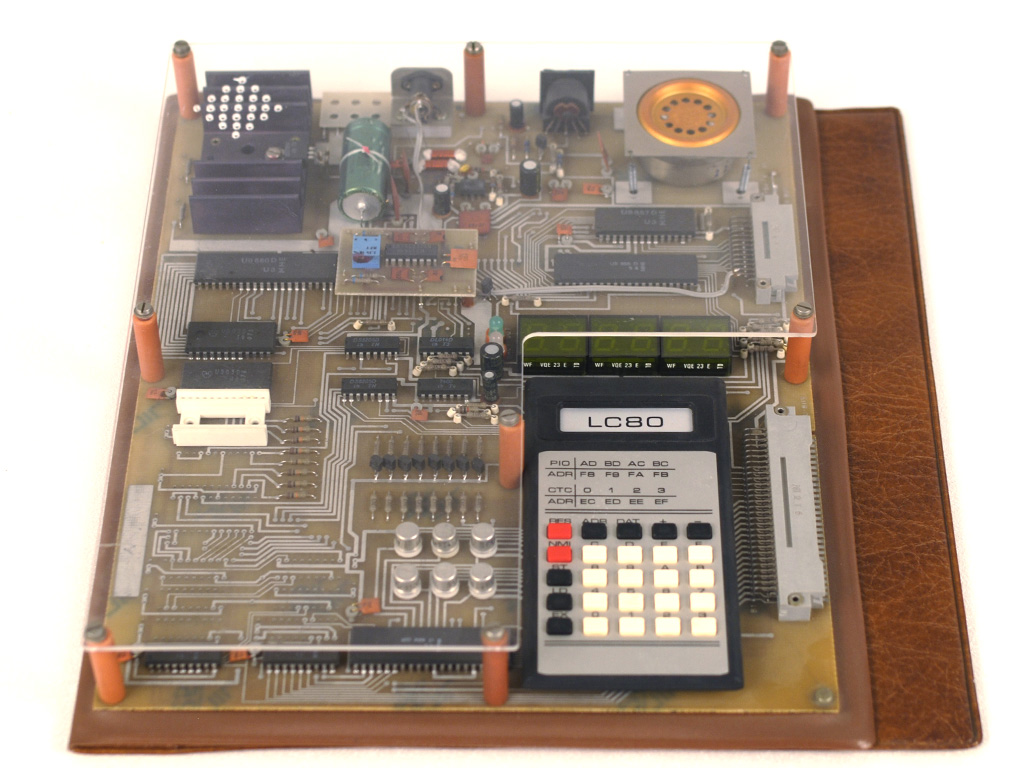
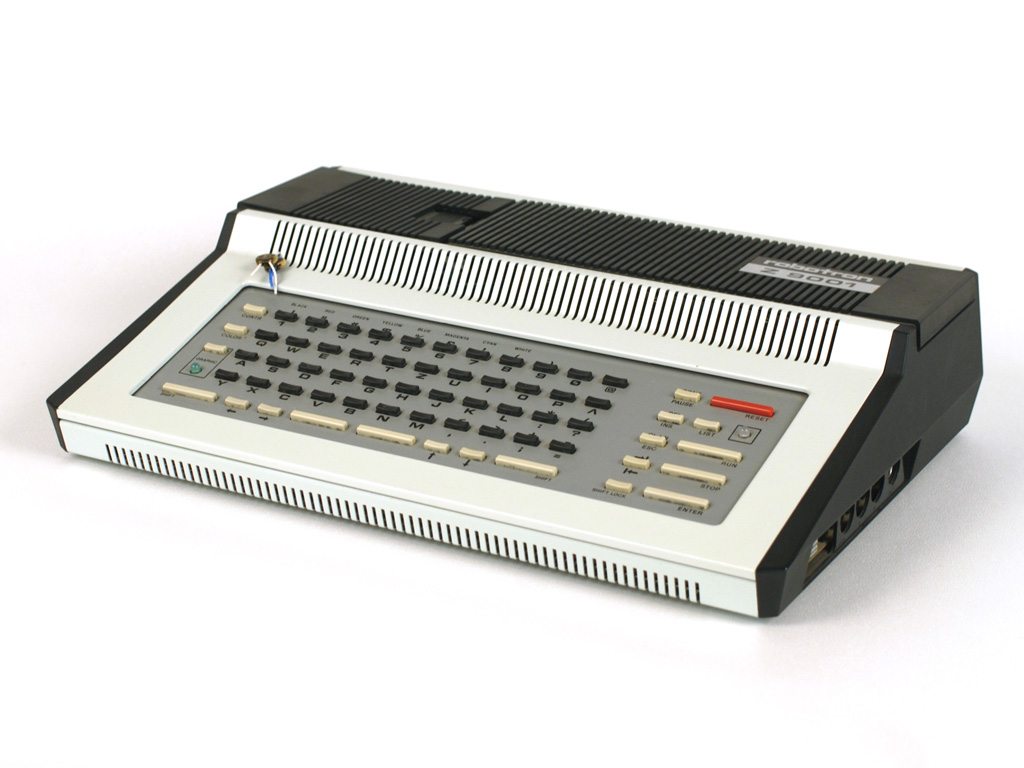
The Curta is a mechanical adding machine in the form of a cylinder with a crank at the top. The operating principle is the Season of the double roller. It was developed in the 1940s by Curt Herzstark and from 1948 to 1970 by the Liechtenstein company Contina AG in a total number of units produced by about 140,000. With a height of 85 mm and a diameter of 53 mm, the Curta I is the smallest mass-produced mechanical four-species calculator in the world.
The curta is a mechanical calculator, with the appearance of a cylinder, wit a cranc on its uppper side. It works like a double stepped roll, which has a diameter of 53 mm and a high of 85mm.With theese dimensions the Curta I is the smallest in series produced mechanical calcullator avaivable, for all four basic calculating modes. The Curta I is made of 571 and the Curta II is made of 719 component parts.
In version one the Curta was able to calculate 11-digit results, the second version of Curta was able to calculate 15-digit results With the ability to calculate all 4 basic calculation modes and its smal dimensions it was possible to use the Curte one handed. Also it was often used were today modern electronical calculators were used.
The Curta was invented by the austrian factory owner Curt Herzstark. After the second world war the Curta was first produced in Liechtenstein. There may existed more efficient calculators at this time, but they were even biger and not transportable
In october 1948 the production in series began with the first version of the Curta. Since 1954 the version II was also produced, which is slightly bigger with its dimensions of 65x90mm, but not significant different from the art of conception than the first version.
Until november 1970 about 140.000 exemplars has been produced. The first version had a price of 425 DM in 1965, while the slightly bigger second version costs about 535DM. Because of their light wight, the Curta was very popular even in fact of the high prices. In the early 70s the Curta versions were replaced by the upcomming electronical calculators. Therefore the Curta has dissapered fron the every day live, but very popular by collectors.
The Curta is able to calculate all of the four basic calculation modes, in which every calculation is reducedd to addition and subtraction. For the use it is neccessary to remember that every turn of the cranc results a addition by digit of the input mechanism to the output mechanism. If the input mechanism is unchanged is Result = InputMechanism * NumberOfTurns true.
In the simple case of addition, one of the both summands is inputed with the actuators on the outside of the cylinder.(the numbers are dislayed in a small window) and with one turn of the crank it is added to the result. The turns are saved in the turn-countwork, with their correct algebraic sign. After that, the second summand is entered, turn the cranc one time and get the correct result.